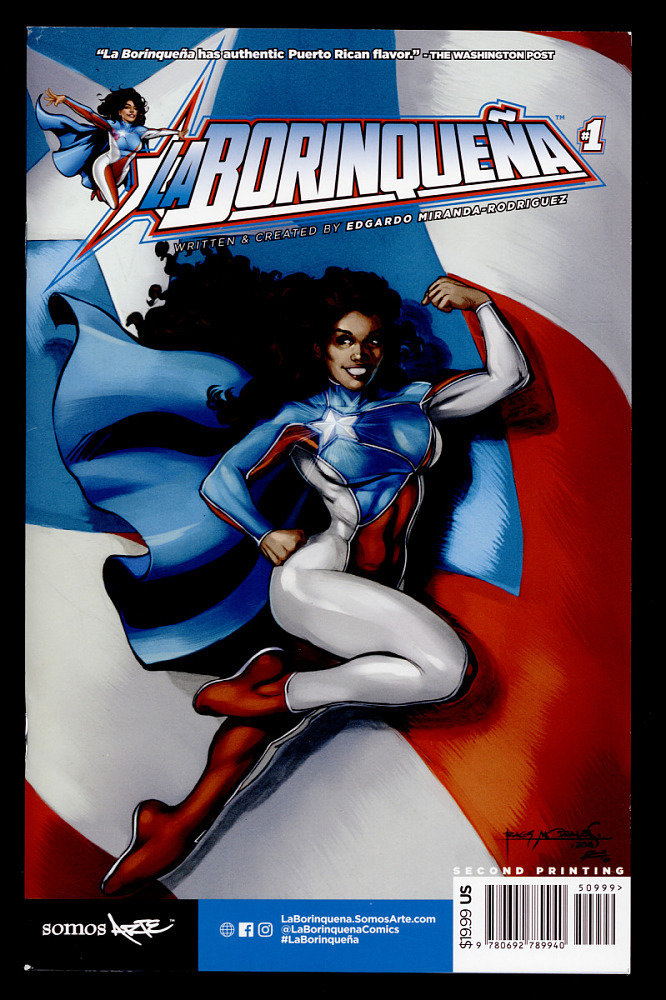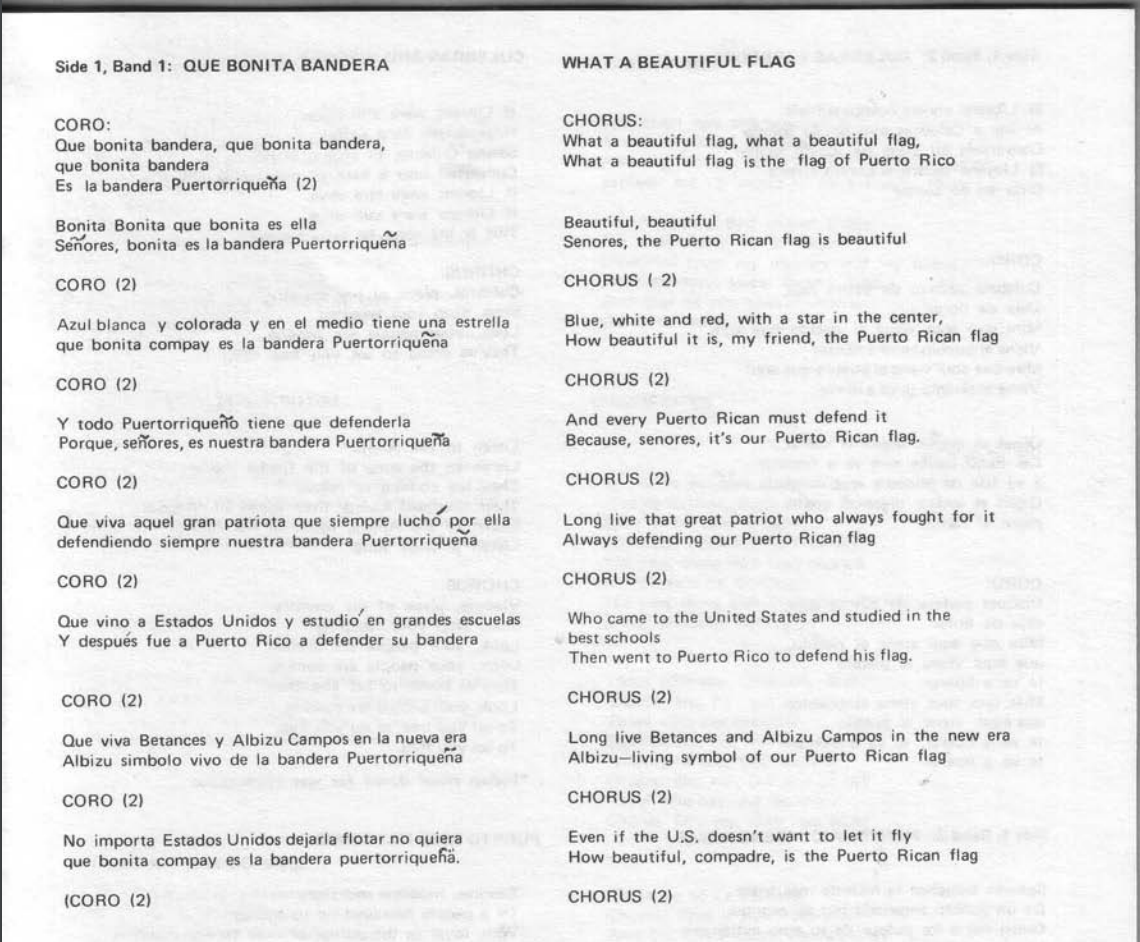
Fiesta Aquí, Fiesta Allá: Music of Puerto Rico
Lesson 5:
Exploring Nueva Canción in Puerto Rico, Latin America, and the Caribbean

What is Nueva Canción, and why did it emerge as an important musical form in Puerto Rico, Latin America, and the Caribbean?
Viva Puerto Rico Libre!, cover design by Karen Lynch. Paredon Records.
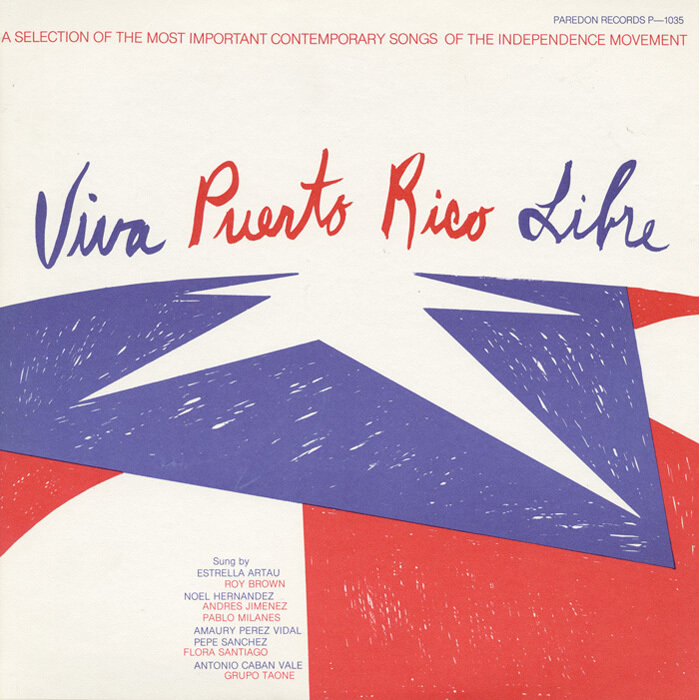

Exploring Nueva Canción in Puerto Rico, Latin America, and the Caribbean
CREATIVE CONNECTIONS
HISTORY & CULTURE
MUSIC LISTENING
30+ MIN
30+ MIN
20+ MIN
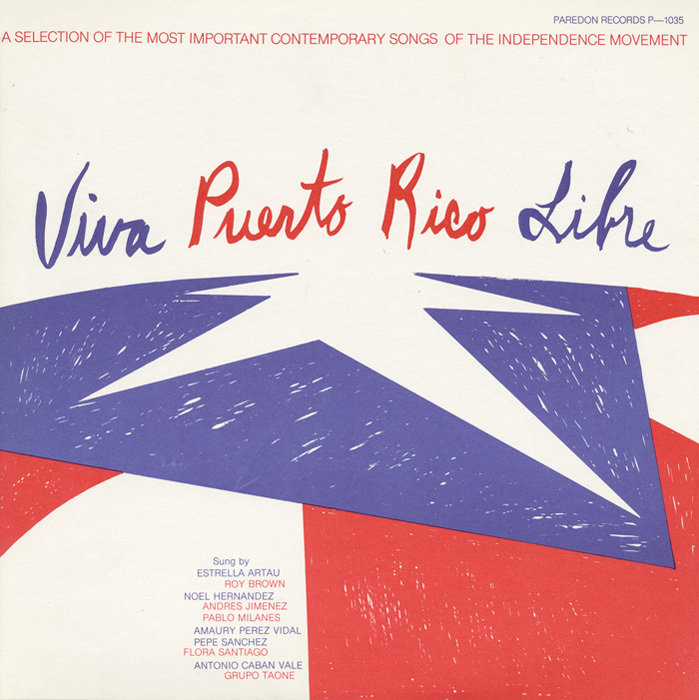


Nueva Canción: A New Song for a New World
Component 1
30+ minutes
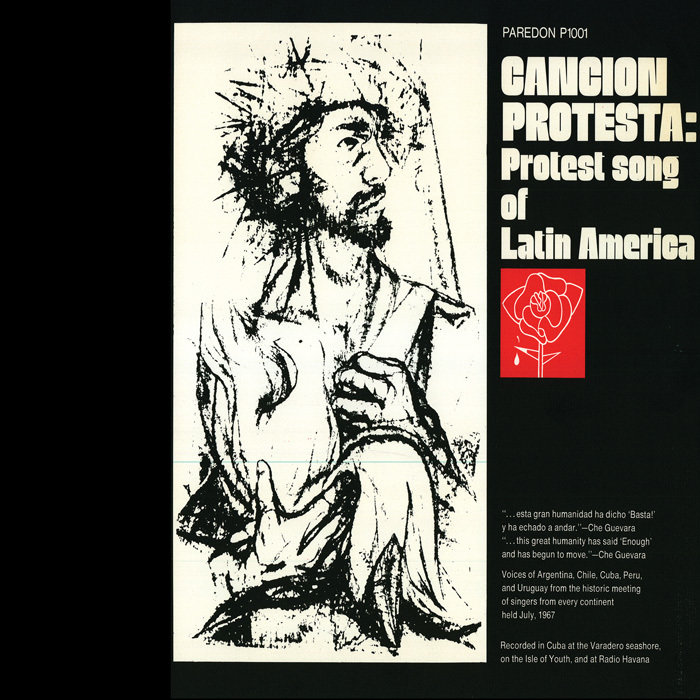
Canción Protesta: Protest Song of Latin America, cover art by Ronald Clyne. Paredon Records


Nueva Canción (A New Song)

Nueva Canción is both a Latin American musical form and a social movement that has been around for nearly 70 years.
- It emerged in the early 1960s when Latin American and Caribbean—and some extent Spanish—cantautores (singer–songwriters) decided to make music in response to existing social and political struggles.


Nueva Canción: "The People's Music"
Poetic and evocative lyrics have spoken (and continue to speak) explicitly of important political and social issues such as poverty, imperialism, democracy, human rights, and religious freedom.
Nueva canción has sometimes been referred to as "the people's music," because it gives a voice to the community.
Historical Context: Three Worlds

- The First World (capitalism): United States, Western Europe, Japan, and Australia.
- The Second World (communism): Soviet Union and Eastern European allies.
- The Third World: the rest of the world, often former European colonies.

Cold War Map 1980, by Aivazovsky. Public Domain, via Wikimedia Commons.
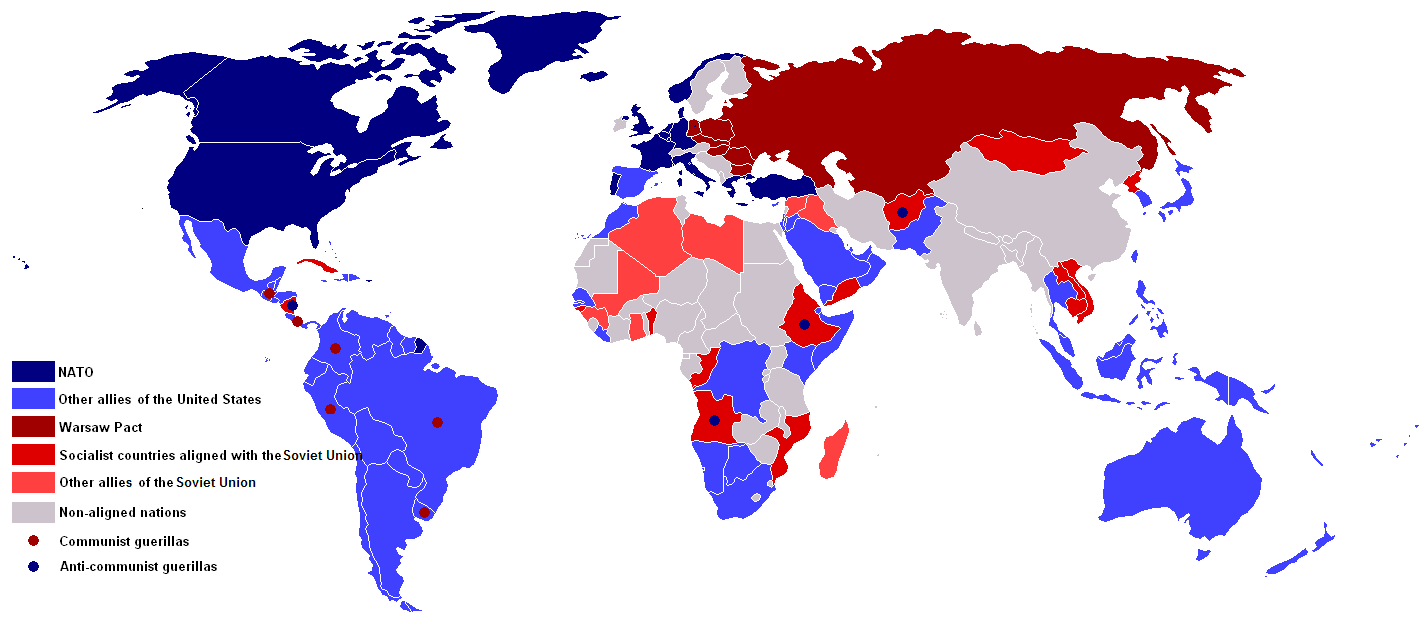
During the Cold War: the world was mapped according to a geopolitical model that divided it into “three worlds”.
Nueva Cancíon Gains Momentum


El Salvador Libre, unknown designer. Monitor Records.
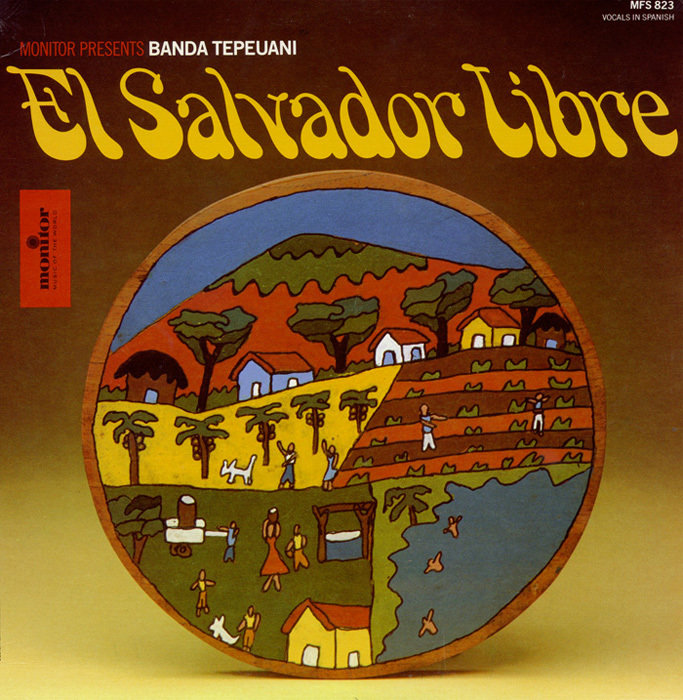
Emerging first in places like Argentina and Chile, it later spread to places like Dominican Republic, Venezuela, Uruguay, Nicaragua, Mexico, Peru, Brazil, Bolivia, El Salvador, and Paraguay.
The nueva cancíon movement gained tremendous momentum as the 1960s progressed.


Listen to Nueva Canción
Nueva cancióneros commonly utilize folk instruments and blend traditional and popular styles. Listen to short excerpts from three examples.
What types of instruments do you hear?
Beginning on the next slide, we will explore the development of nueva cancíon in the context of Puerto Rican culture specifically.
"Trabajadores a Poder (Workers to Power)" by José Durán (Chile)
"A Desalambrar (Tear Down the Fences!)" by Daniel Viglietti (Uruguay)
"Varadero (Now Its Time for You and Me" by Carlos Puebla (Cuba)
Nueva Canción in the Puerto Rican Context


- Historically, music making has played a significant role in providing a space for social actors (e.g., singer–songwriters and activists) to give voice to the issue of sovereignty.
The development of Puertorican nueva canción is tied directly to Puerto Rico's struggle for independence.
- Most Latin American countries achieved independence (e.g., from Spain and Portugal) in the early 1800s. However, Puerto Rico did not emancipate until 1898.
- Independence was delayed by the large Spanish military presence on the island, which impeded social collective action.
"La Borinqueña": A Revolutionary Anthem


Arguably, the earliest musical example that framed the Puerto Rican nation’s desire for independence is “La Borinqueña,” (En., Puerto Rican Woman): the island’s “revolutionary” national anthem. Listen to a live recording here. Then, move on to the next slide to learn more.
Libertad o Muerte, unknown artist. Paredon Records.

“La Borinqueña,” by Andrés Jiménez and Grupo Taoné Tipico. Begins at 06:35.
About "La Borinqueña"


“La Borinqueña” preceded El Grito de Lares (En., The Cry of Lares), the famous but unsuccessful rebellion that took place in the city of Lares in 1868.
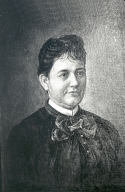
Lola Rodriguez de Tio, by Fernando D. McKenna. National Portrait Gallery.
The original song lyrics were composed in Cuba in 1867 by Lola Rodríguez de Tió, who was banished from Puerto Rico by colonial order.
- She wrote them in support of the Puerto Rican Revolution
- They were also inspired by the initial efforts for emancipation that she witnessed in Cuba
A Revolutionary National Anthem



Watch this version of "La Borinqueña."
La Borinqueña (Versíon Reevolucionaria), featuring Mayda Belen and Quique Domenech, uploaded by Mayda Belen.
What is revolutionary about it? What do "sugar" and "machete" symbolize?
"La Borinqueña" in the Multiverse


The song "La Borinqueña" became a source of tension under US rule, so in 1977, alternative lyrics by Manuel Fernandez (1903) were adopted that were less rebellious.
In 1898, the US entered and helped to end the Spanish-American War (1895–1898), but proceeded with the temporary occupation of Cuba and annexation of Puerto Rico.
- Some people welcomed US presence; others, resisted the efforts to "anglicize" Puerto Rico
National anthem of Puerto Rico "La Borinqueña", uploaded by Defonseca. Find the lyrics in the comment section for the video and the teacher's guide.
Discuss differences in lyrical meaning between the two versions.
La Borinqueña, a Puerto Rican Super Heroine


The significance of music (e.g., the Puerto Rican Anthem) in the efforts for attaining political sovereignty and affirming cultural identity continues to be a source of inspiration as illustrated by a comic book written in 2016, featuring a new Puerto Rican super heroine, "La Borinqueña".
La Borinqueña, #1, written and created by Edgardo Miranda-Rodrigues, illustrated by Rags Morales and Emilio López. National Museum of American History.
Protest Music in the Early 1930s


In the US, Puerto Ricans faced intolerance and discrimination despite being citizens.
"Lamento Borincano," original bolero version by Canario y Su Grupo
US control meant dual citizenship, education, and public works funding--but it also meant--limited imports to Puerto Rico during the Great Depression, substantial unemployment, and therefore, the need for migration.
Rafael Hernandez's song, "Lamento Borincano," written in 1930 as a bolero, reflects the strong Anti-American occupation sentiment that emerged during this period.
- The lyrics of this song tell the story of a jíbaro (i.e., a Puerto Rican farmer), who is unable to sell his produce because the depression has shut down the local market.
Wake Up, Puerto Rican!


The movement for self-government (Puerto Rican independence) inspired songs like Andrés "El Jíbaro" Jiménez’s "Despierta Boricua" ("Wake up, Puerto Rican").
"Despierta, Boricua (Wake Up, Puerto Rican)" by Andrés Jiménez
Mid-20th century, different perspectives on the US role in Puerto Rico found political expression in three parties:
- The Puerto Rican Independence Party (PIP): wanted absolute sovereignty (self-government).
- The Popular Democratic Party (PPD): wanted the status quo (things as they were).
- The New Progressive Party (PNP): wanted full integration into the US (statehood for Puerto Rico)
Lolita Lebron and Puerto Rican Independence


In 1954, Lolita Lebron was sentenced to 25 years in prison after opening fire inside the US House of Representatives to raise awareness for the Puerto Rican cause.
- Lolita Lebron’s efforts inspired Carlos Puebla, a Cuban song writer, who wrote a song called "Guajira por Lolita Lebron" ("Song for Lolita Lebron")
"Guajira por Lolita Lebron (Song for Lolita Lebron)," by Carlos Puebla. Smithsonian Folkways Recordings.
From the 1950s to the 1970s, Puerto Rico experienced some political victories--most notably-- the right to elect governors locally and the status of a commonwealth nation. Nonetheless, in the 1950s, the US criminalized any mention of Puerto Rican independence.
Nueva Canción in Full Bloom: The 1970s


Among the most notable singer-songwriters was Roy Brown, born in Florida (Puerto Rican mother who was an US naval officer). Much of his music addressed themes of anxiety and unrest.
"El Negrito Bonito" by Roy Brown Ramirez
Puerto Rican nueva canción bloomed in the 1970s, addressing not only local issues (e.g., independence), but also international struggles (e.g., The Vietnam War).
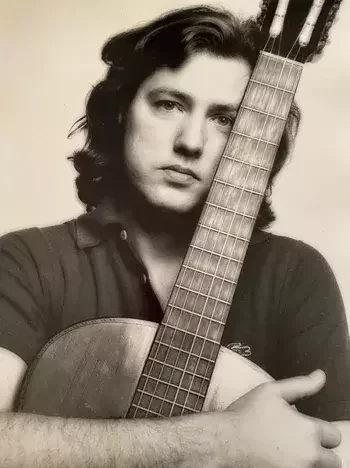
Roy Brown, unknown photographer. Courtesy of the artist.


This song, "Antonia," was written in honor of a University of Puerto Rico student who was killed by a policemen during an anti-Vietnam War and Education Reform student protest in 1970.
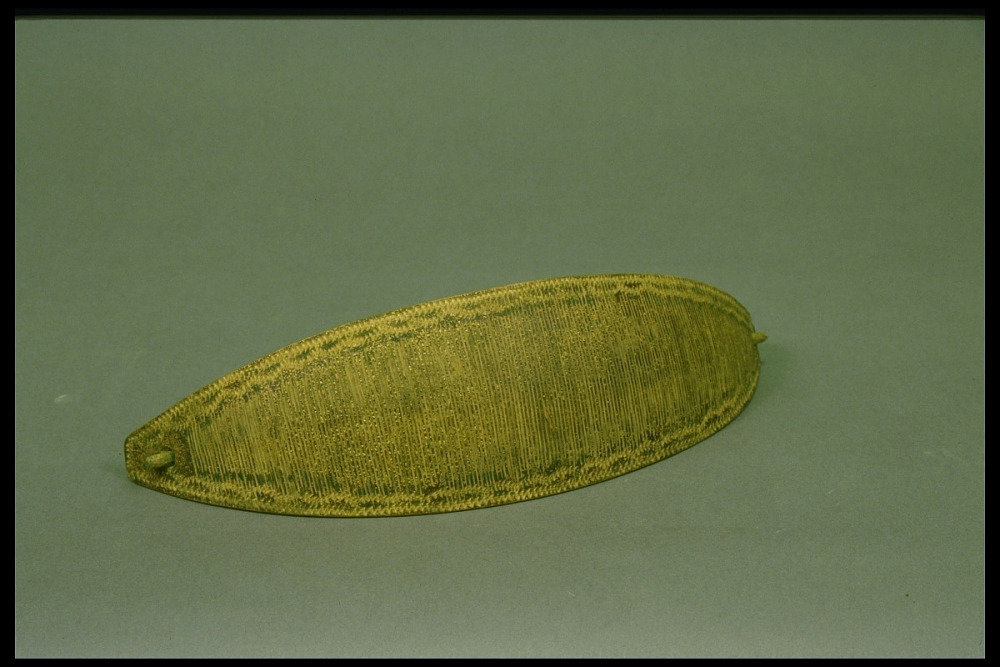
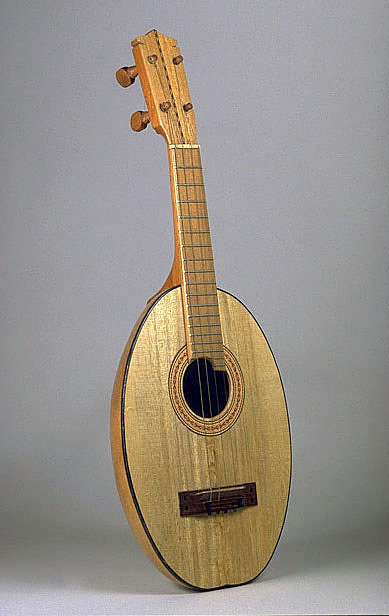
Above: Cuatro, unknown maker. Left: Güiro, unknown maker. National Museum of American History.
Nueva Canción in Full Bloom: The 1970s
Another early icon and pioneer of Puerto Rican nueva canción was Antonio “El Topo” Cabán Vale, born and raised in the town of Moca, in west Puerto Rico.
- His musical group (Taone) drew inspiration from Puerto Rican jíbaro music and instruments such as cuatro and güiro.
"Antonia" by Antonio Cabán Vale
Beyond Borders: Borinqueñas and Chicanas


Suni Paz (Argentinian cantautora) moved to the US in 1965. Her song "Albizu Campos, Sembrador" (Albizu Campos, Sower) is a nueva canción ode to this Puerto Rican political activist.
"Albizu Campos, Sembrador (Albizu Campos, Sower)" by Suni Paz
Puerto Rican activists, cantautores, and the music they have inspired or made, have also been significant to the struggles of people in other places.
- For example, when the First National Chicana Conference took place in Houston, Texas (1971), Chicanas (US-born Mexican) were joined by Puerto Rican, and other Latino women.
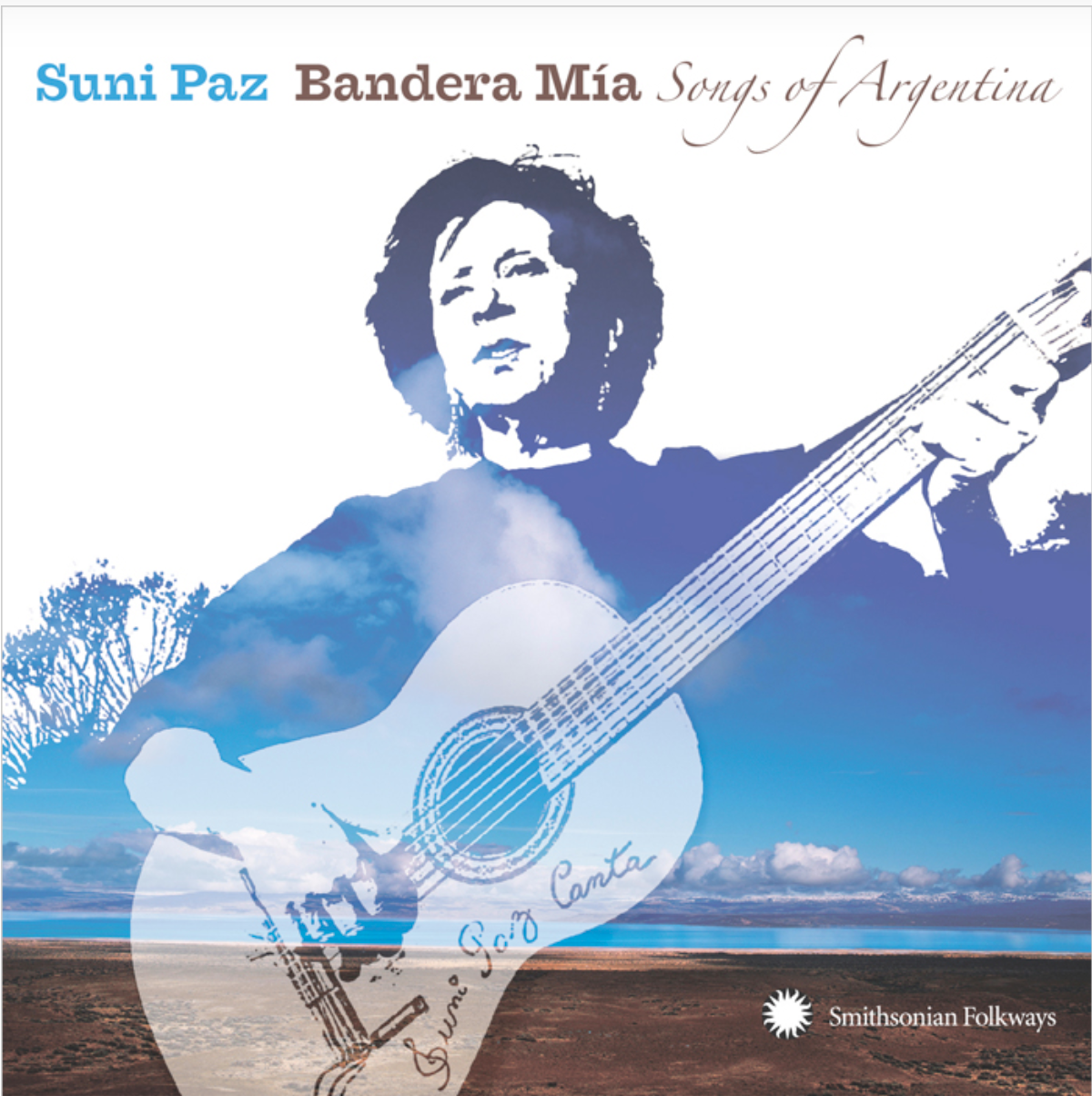
Suni Paz, cover art by Sonia Cohen Cramer. Smithsonian Folkways Recordings.
Optional: Exploring Personal Musical Preferences


If you listened to all the musical examples in this component (tracing the history and development of nueva canción in Puerto Rico): Which was your favorite, and why?
-
"La Borinqueña" by Lola Rodríguez de Tió
-
"Lamento Borincano" by Rafael Hernandez
-
"Despierta Boricua (Wake Up Puerto Rican!)" by Andrés Jiménez
-
"Guajira por Lolita Lebron" ("Song for Lolita Lebron") by Carlos Puebla
-
"El Negrito Bonito" by Roy Brown
-
"Antonia" by Antonio Cabán Vale
-
"Albizu Campos, Sembrador (Albizu Campos, Sower)" by Suni Paz

Learning Checkpoint
- What is nueva canción and why did it emerge as an important musical form in Latin America and the Caribbean?
- What caused the movement to gain popularity in Puerto Rico?
- Who were some important nueva cancióneros, and what social topics did they write about?

End of Component 1: Where will you go next?



Component 2

30+ minutes

Nueva Canción: Musical Characteristics and Performers
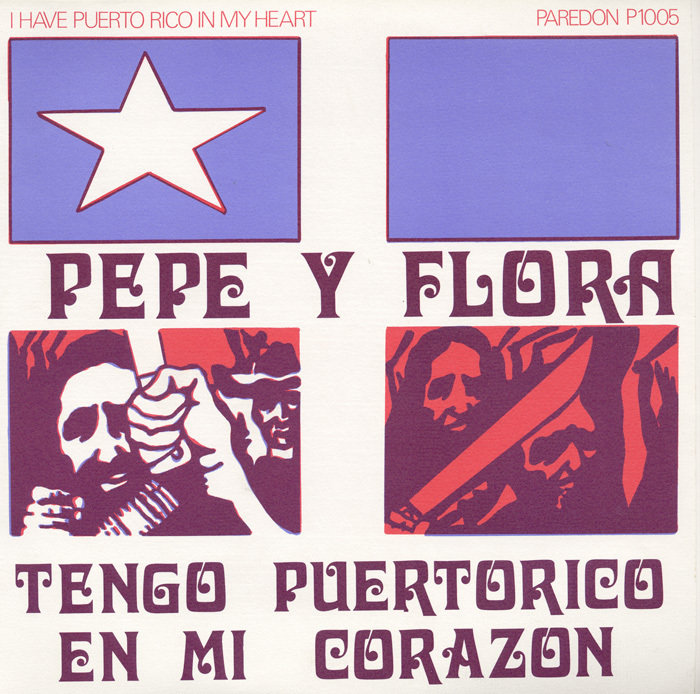
Tengo Puerto Rico en Mi Corazón, unknown designer. Smithsonian Folkways Recordings.
Tracing the Roots of Nueva Canción


Silvio Rodriguez at a Street Concert, photo by Rena Benmayor. Paredon Records.
This is because nueva canción draws influence from folk traditions in which the guitar and guitar-like instruments were commonly used.
As nueva canción started to emerge, the guitar was the main accompaniment instrument of cantautores.
“La Era Esta Pariendo un Corazon” (The Era is Birthing a Heart) by Silvio Rodriguez
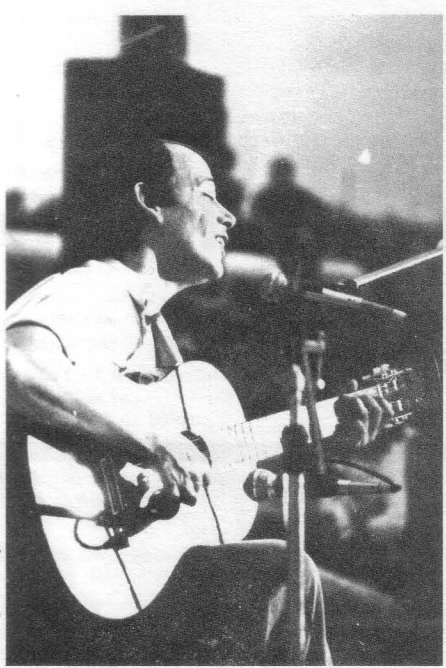
Cuba: Nueva Trova


- Musicians were first inspired by traditional trova music.

Musician and Composer Sindo Garay Posing With a Guitar, photo by Armand. University of Miami Libraries.
Vieja trova, as the genre is known today, was associated with individual trovadores (e.g., singers such as Sindo Garay–pictured here), who moved around playing guitar and singing about current events.
One of the earliest manifestations of nueva canción emerged in Cuba, under the name nueva trova.
The Evolution of Nueva Trova in Cuba


In its most basic form, nueva trova is guitar-based music; although it has also been influenced by rock, folk music, other forms of dance music, Afro-Cuban drumming, and more recently jazz and rap.
Nueva trova's history is deeply tied to Cuba's political history.
- It was embraced among young people in the aftermath of the Cuban Revolution (1959).
"La era esta pariendo un corazón"

Why do you think Silvio's music was appealing to young people? What do you like about his sound?


The most famous nueva trova artist is Cuban cantautore Silvio Rodriguez (b. 1946), who was a poet and prolific composer.
- He catered to a young generation of urban Cuban listenership
- He drew inspiration from Bob Dylan and the Beatles
- His early performance style features songs accompanied only by acoustic guitar
- Listen to "La Era Esta Pariendo un Corazón" once more!

Optional: "De un pájaro las dos alas"
This song, "De un pájaro las dos alas" (Two Wings of the Same Bird), was inspired by a Lola Rodríguez Tió poem (1963).
- Lola wrote, "Cuba and Puerto Rico are two wings of the same bird, and they receive bullets and flowers in a single heart."

Pablo Milanés, an Afro-Cuban nueva trova cantautor, often borrowed elements of Cuban popular dance music (e.g., son, bolero, and rumba).
Milanés used the poetry of recognized authors (e.g., Nicolas Guillén, Cuba’s national poet) and unique guitar-picking patterns.
Nueva Trova Goes Electric: "Cuba Va"


How is it different from and similar to "La era esta pariendo un corazón"?
In the 1980s, many Cuban nueva trova musicians followed in the footsteps of Silvio Rodriguez, who began to incorporate electric instruments used in rock music.
Listen to "Cuba Va," performed by Silvio Rodriguez, Pablo Milanes, and Noel Nicola.
What instruments and sound effects do you hear?
Influences of Nueva Trova in Puerto Rico: "Monón"


Puerto Rican nueva canción followed a similar development to the Cuban variety in terms of using modern instrumentation.
Listen to Puerto Rican musician Roy Brown’s “Monón”.
What instruments and sound effects do you hear?
How is it different from and similar to "Cuba Va"?

Roy Brown, unknown photographer. Courtesy of the artist.
Optional: More Attentive Listening - "Contrariedad"


Compare and contrast Cuban and Puerto Rican varieties of nueva canción.
If time allows, listen to "Contrariedad" (Contrariety) by another Puerto Rican cantautor (singer-songwriter), Noel Hernandez.
What musical sounds do you hear?
Balancing Tradition and Modernity

The combination of folk, indigenous, and modern instruments confirmed traditional and national culture and values, but also encouraged musical fusions and innovations.

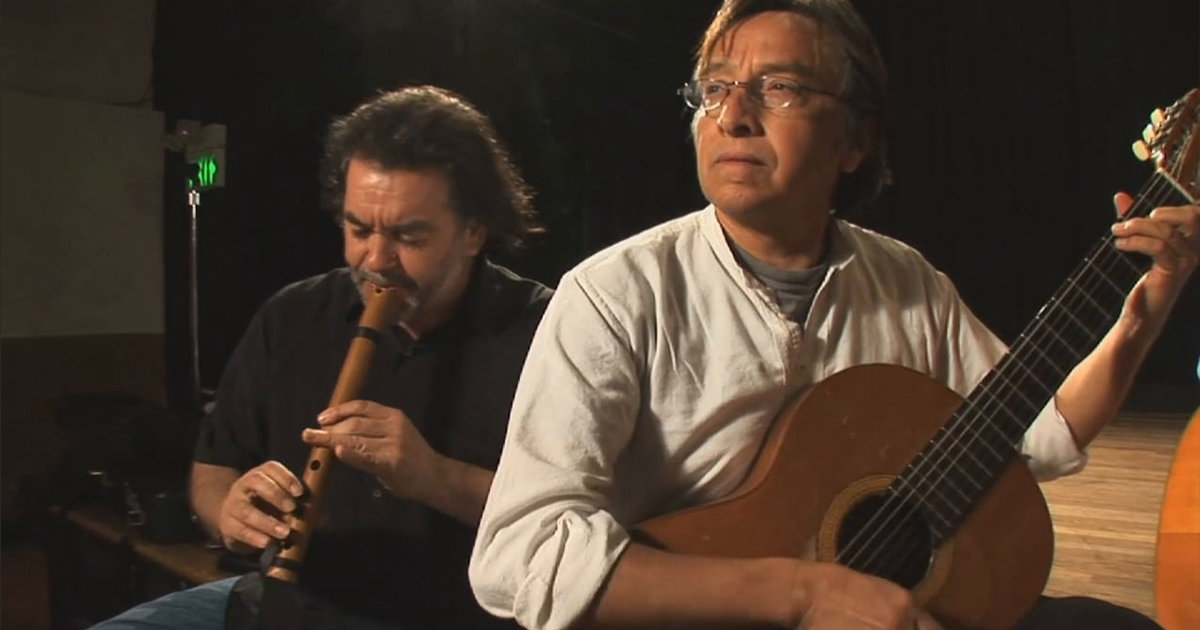
Grupo Raíz Performs Nueva Cancíon, video still by Smithsonian Folkways Recordings.
In contrast to Cuban nueva trova, which was primarily guitar-based, early nueva canción cantautores (singer–songwriters) in other places often incorporated additional folk and indigenous instruments.
-
This gave each nueva canción variation across the Americas a distinct sound.
Nueva Canción in South America

What musical sounds do you hear?

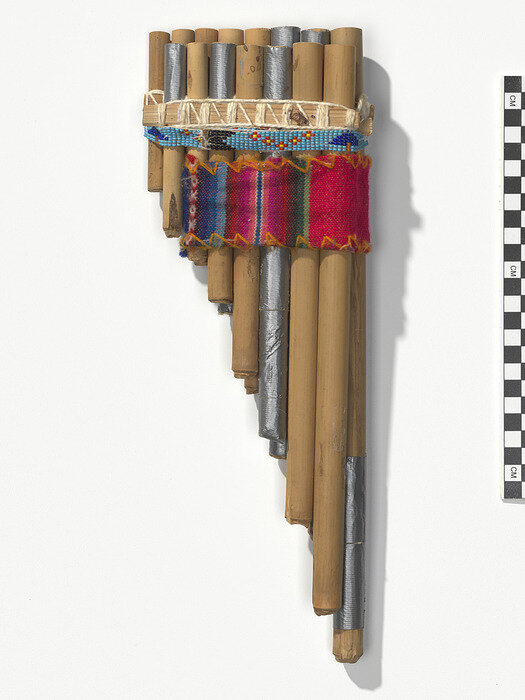
In South America nueva canción instruments such as the quena (i.e., Andean flute), zampoñas (i.e., panpipes), and the charango (i.e., a small ten-string chordophone) were often used to create a sense of dignity and pride in Native cultural roots.

Listen to “La Resistencia Se Organiza” by Patricio Manns (Chile):
Right: Panpipes, collected by Elayne Zorn. Below: Flute from the Andes, Collected or purchased from local residents by Alpheus Hyatt Verrill. National Museum of the American Indian.

Cantautor Rafael Manríquez borrows from several Chilean folk styles: harp-driven country tonadas (songs); Andean cachimbos (charango and quena folk dance); southern Chiloé–island songs with accordion, an edgy urban cuecas (Chilean national dance).
Chilean Nueva Canción

In Chile, nueva canción turned political with the violent rise of the dictator Augusto Pinochet (1973–1990).
Tonada de Gris Silencio, produced by Smithsonian Folkways Recordings.

Listen for the sounds of Andean instruments such as harp, charango, and quena.

"The Siege of Santa Maria de Iquique"
"The Siege of Santa Maria de Iquique: A People's Cantata of the Chilean Nitrate Miners" by Quilapayún and Hector Duvachelle
Quilapayún and Hector Duvachelle (Chile) used nueva canción to bring awareness to human right violations.
About "The Siege of Santa Maria de Iquique":
- "The bloodiest massacre in Chile’s history happened in 1907, when nitrate miners from Bolivia, Argentina, Peru, and Chile demanding humane working conditions and higher wages were shot by the army at their miner’s encampment in the schoolyard..."
Variants of Puerto Rican Nueva Canción

Puerto Rican nueva canción often uses:
- simple musical structures (e.g., chorus–verse scheme)
- simple chord progressions (e.g., I–IV–V)

Puerto Rican variants of nueva canción also borrow from different local and international musical genres and styles.
- Local: plena, bomba, danza, and música jíbara from Puerto Rico
- Foreign: bossa nova, US protest songs, blues, rap, salsa, reggae, rock, and jazz

Viva Puerto Rico Libre!, cover design by Karen Lynch. Paredon Records.
I Got Puerto Rico in My Heart!



Tengo Puerto Rico en Mi Corazón, unknown designer. Smithsonian Folkways Recordings.
- Pepe and Flora expressed traditional (plena and música jíbara) identity in a modern context and sent a message of solidarity to the people in Puerto Rico who were protesting against US control.
Two examples of Puerto Rican nueva canción that borrow elements from plena and música jíbara, are "Que bonita bandera" and "Controversia jíbara", written by Pepe and Flora, Nuyorican (New York-born Puerto Rican) cantautores.
Next, you will have a chance to engage with these songs, which were central to rights and independence struggle and rallies of Nuyoricans.
Attentive and Engaged Listening: "Que bonita bandera"

is a good opening song for this album. This plena ... is a very popular song among New York Puerto Ricans. About a year and a half ago, students at Bronx Community College were picketing their school ... Since someone had brought a flag ... we began singing this song. Everyone on the street, including the cops, laughed at us. 'Imagine singing that kind of song to a flag'; but their smiles disappeared when we replaced the American flag with the Puerto Rican flag. That's the point of course. When a country could not fly, its flag until 1956, that flag becomes part and parcel of its patriotic struggle for independence.
"Que bonita bandera," performed by Pepe y Flora

The liner notes say "Que Bonita Bandera" (What beautiful Flag):
As you listen, clap along.

Listen again.
Sing along with the chorus:
"Que bonita bandera, que bonita bandera, que bonita bandera, que bonita bandera, es la bandera Puertorriqueña"
Engaged Listening: "Que bonita bandera"

Attentive Listening: "Controversia jíbara"

An example of a form which is quite common to Puerto Rican music. It is a kind of contest between husband and wife, Pepe and Flora, adding a few lines of their own, carry it off beautifully.
"Controversia Jíbara," by Pepe y Flora

The liner notes say "Controversia jíbara" is:
Identify the chord progression: As you listen, hold up 1 finger for the I chord, 4 fingers for the IV chord, and 5 fingers for the V chord.

Learning Checkpoint
- What are some instruments and musical characteristics associated with nueva canción in different parts of Latin America and the Caribbean?
- How do cantautores (singer–songwriters) balance tradition and modernity?

End of Component 2: Where will you go next?




Component 3

20+ minutes
Fiesta and Nueva Canción: A People's Movement

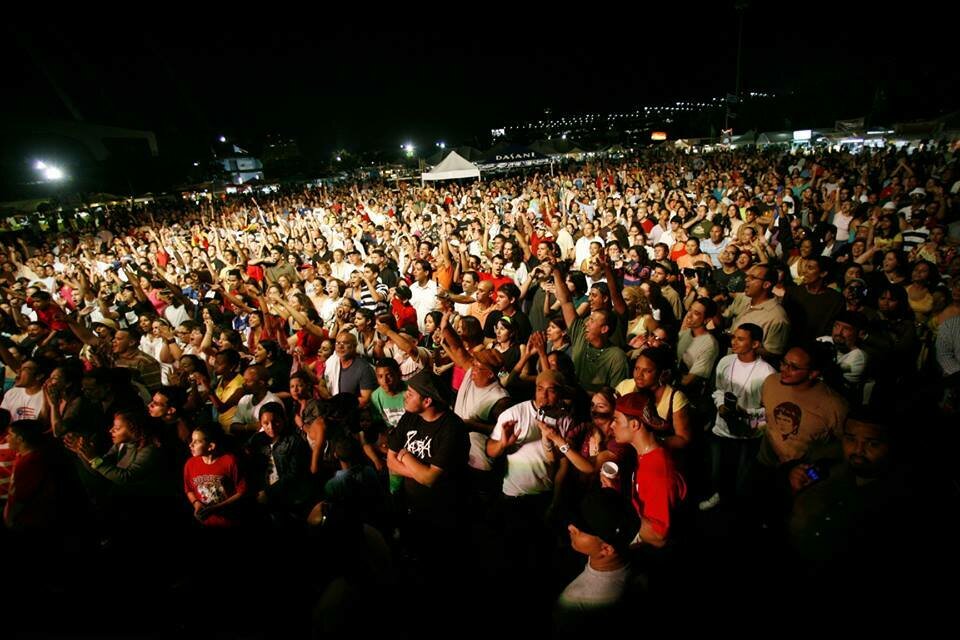
Festival de Apoyo de Claridad, by Prismusic. Courtesy of Puerto Rico is Music!.

Fiestas and Festivals in Puerto Rico and Beyond
In Lesson 1 of this pathway, we learned that fiestas and festivals are celebrated year-round in Puerto Rico, providing continuity to long-held traditions and encouraging the creation of new ones.
Many fiestas and festivals are also celebrated in other parts of the Caribbean and Latin America, which highlights Puerto Rico’s historical connection to this region.

Street Procession at the Fiesta Santiago Apostol, by Lowell Fiet. Digital Library of the Caribbean.

Festivals as a Vehicle to Preserve Tradition

Fiestas and festivals represent important opportunities for the continuation, recreation, and renewal of tradition, at local, national, and regional levels.
Whereas fiestas tend to be more informal, festivals often involve planned, staged performances.
Old San Juan Puerto Rico Fiestas De La Calle San Sebastian, ID 235400585. © Edgardo Cuevas|Dreamstime.com.

Plena at the 2022 Smithsonian Folklife Festival, by Josh Weilepp, provided by the Ralph Rinzler Folklife Archives. Smithsonian Center for Folklife and Cultural Heritage.

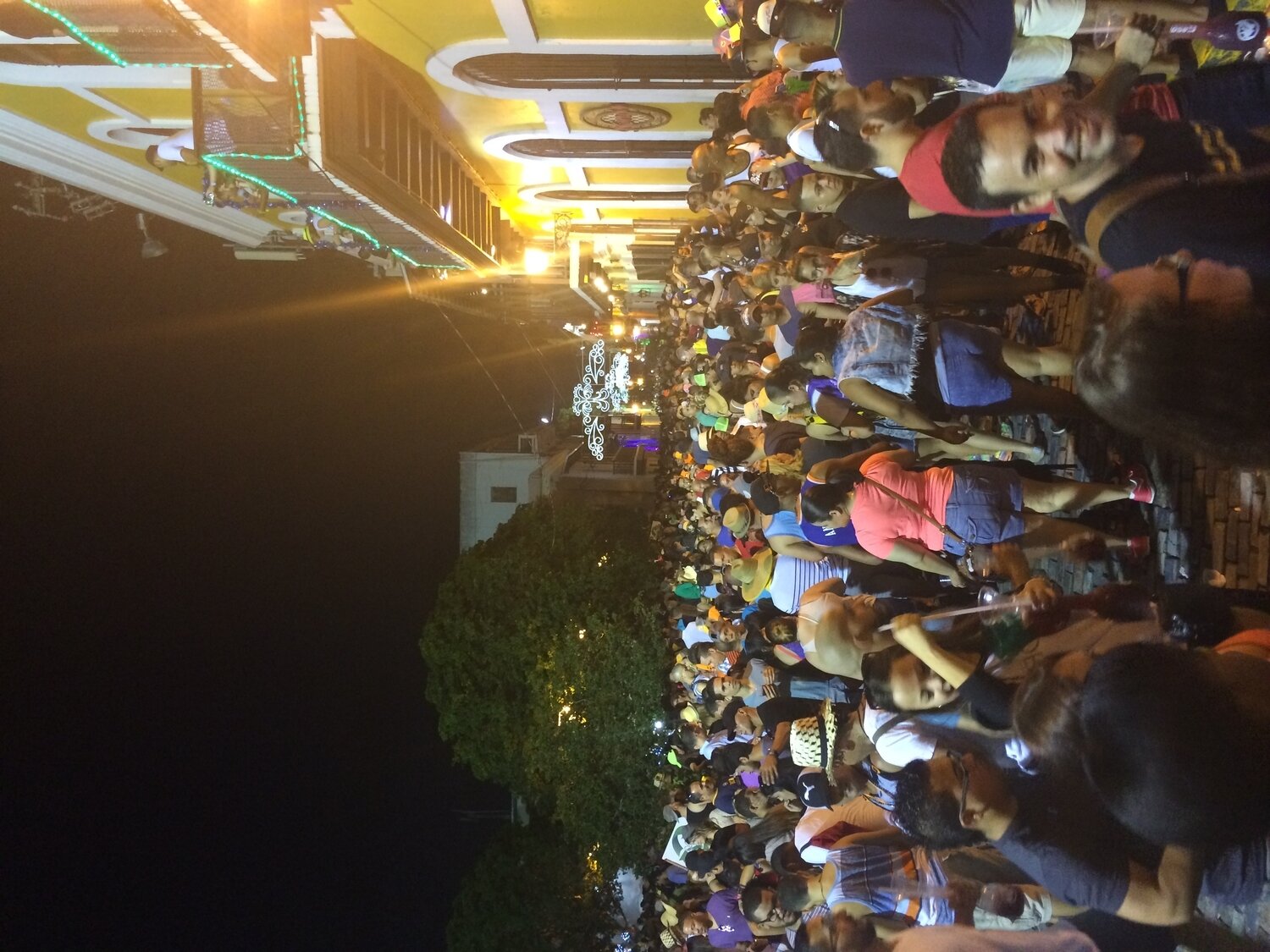

Festivals as Social and Political Activism
Nueva canción plays a prominent role at these types of events, bringing awareness to social and political struggles and inspiring and motivating members of communities to pursue collective action.

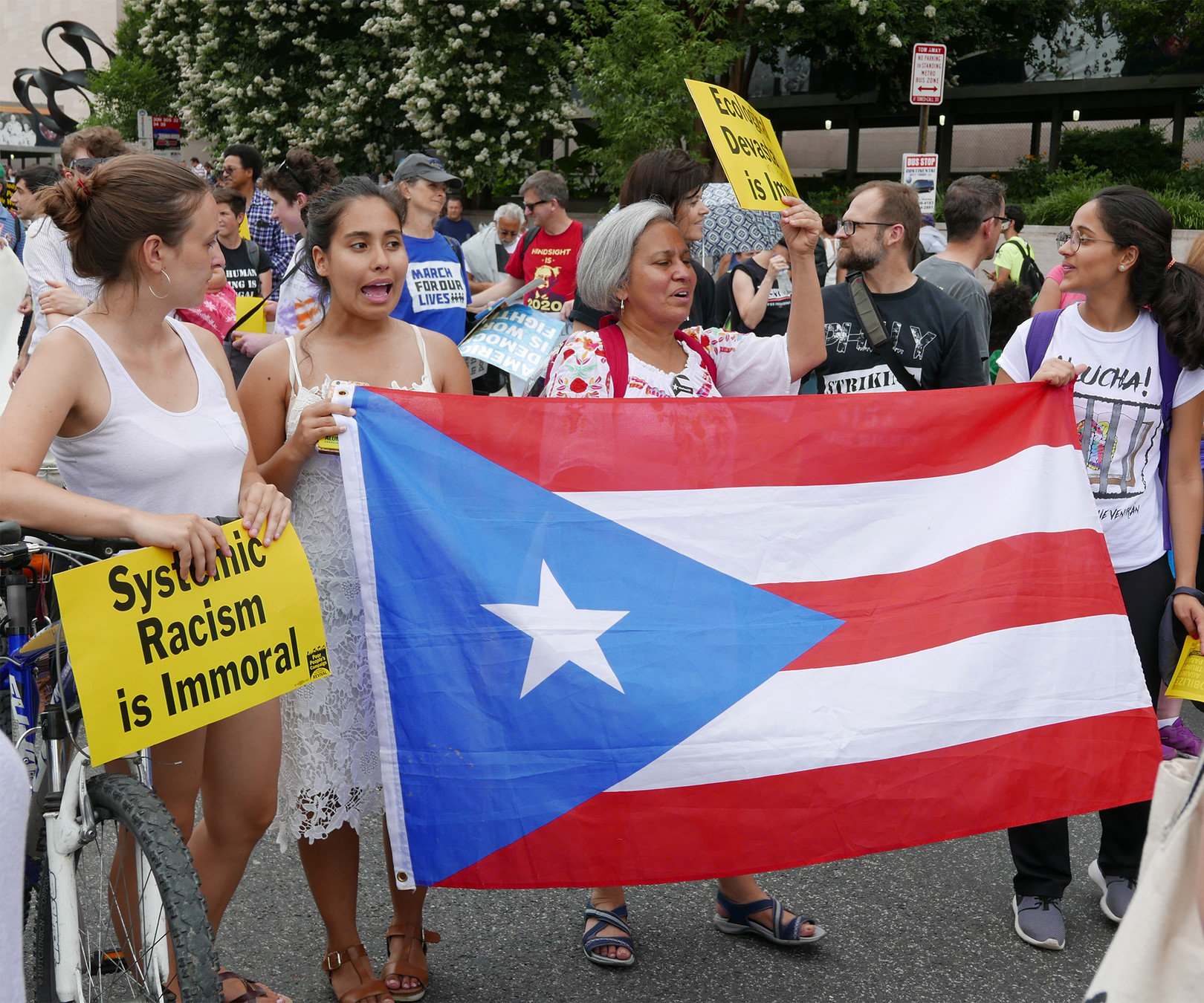
Poor People's Campaign DC 2018, by Susan Melkisethian. CC BY-NC-ND 2.0, via Flickr.
Some festivals provide avenues to critique social norms and present alternate perspectives on social and political issues.

Nueva Canción: "The People's Music"
In this component, you will learn about two important festivals that highlight the power of music to inspire people to work towards social change: 7 dias con el pueblo in the Dominican Republic and Festival de Claridad in Puerto Rico.
Nueva cancíon has often been referred to as "the people's music" because it gives voice to community.


Nueva Canción and "7 días con el pueblo"

In 1974, a historic international event took place in the Dominican Republic, called 7 días con el pueblo (7 days with the People).
This politico–musical festival was organized to show and promote solidarity of the people in their democratic struggles.
Original Poster for 7 Días con el Pueblo. Taller Latino.


Historical Context: Nueva Canción in the Dominican Republic

In the Dominican Republic, nueva canción emerged after the over–30–year dictatorship of Rafael Trujillo (1930–1968) among its urban (i.e., city) youth.
It was also a reaction to the military coup that followed the assassination of Trujillo, armed foreign intervention, and the presidential installation of an unpopular Trujillo crony.
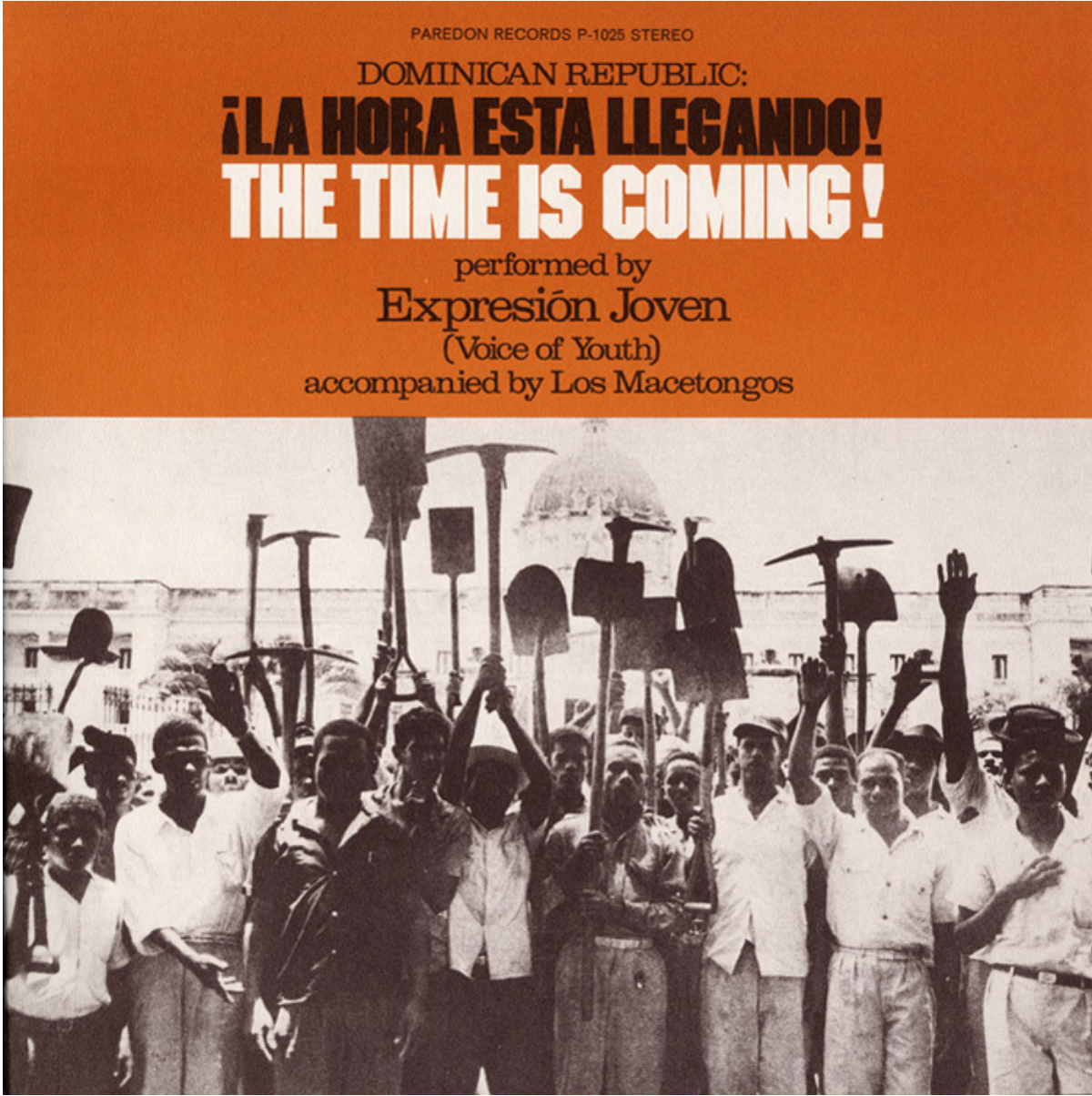
¡La Hora Esta Llegando!, cover design by Ronald Clyne. Paredon Records.

"La hora esta llegando"
The song "La Hora esta Llegando" (The Time is Coming) was written during this period of political unrest.

"Esta Llegando la Hora (The Time is Coming)," performed by Expresión Joven (Voice of Youth)

Musically, what do you notice?

Watch and Listen: "7 días con el pueblo"

7 Días con el Pueblo, El Taller Latino Americano. Left: Lucecita Benitez. Right: Los Guaraguaos sings "No Basta Rezar", El Taller Latino Americano.

Nueva Canción at Puerto Rican Festivals

At its peak of popularity, nueva canción was also performed in various contexts and festival venues in Puerto Rico.
- Cantautores performed in support of social and political movements on the streets, at rallies, picket lines, and café-concerts.

Libertad o Muerte, unknown artist. Paredon Records.

Nueva Canción at Puerto Rican Festivals
The Puerto Rican Socialist Party (PSP) even founded its own record label, "Disco Libre" or "Free Records" (1970–1976) in support of nueva canción.
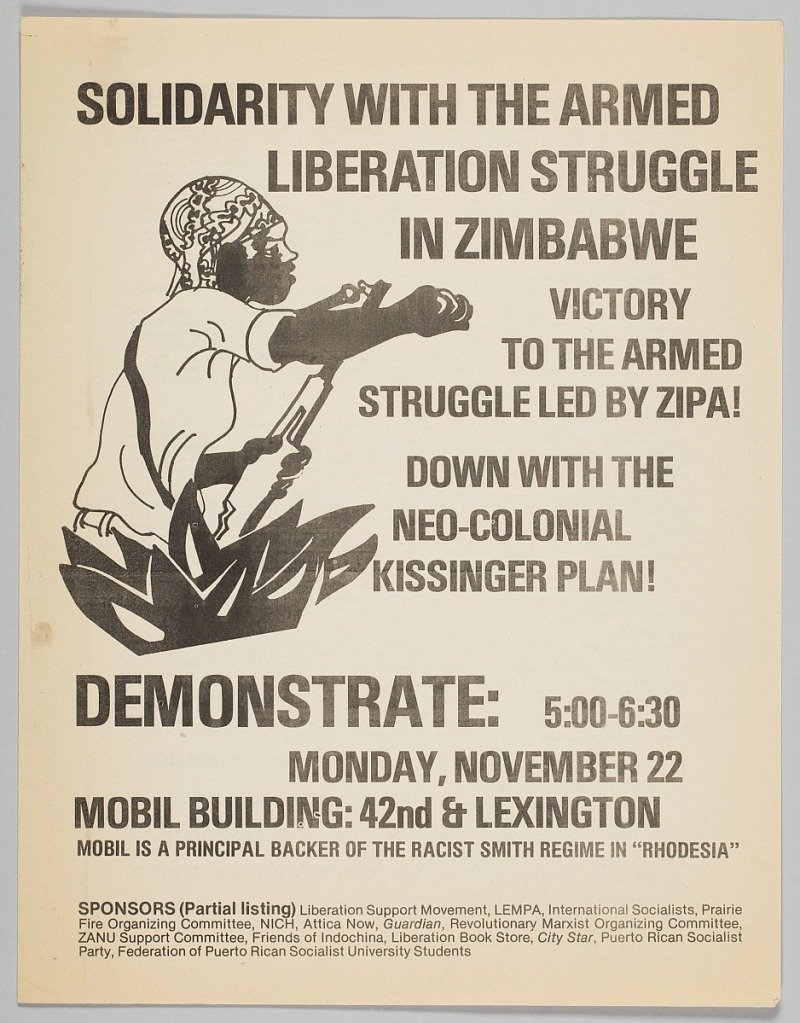
Flyer Advertising a Demonstration in Solidarity with Zimbabwean Liberation, by ZANU Solidarity Committee, The National Guardian, and the Puerto Rican Socialist Party. National Museum of African American History & Culture.

Political organizations understood the power of nueva canción in their efforts to organize and mobilize people, and often used performances as resources to this end.

Nueva Canción and "Festival de Claridad"

One event in Puerto Rico that has become central to the nueva canción scene is the Festival de Claridad (Clarity Festival).

Festival de Apoyo de Claridad, by Prismusic. Courtesy of Puerto Rico is Music!.

The Power of Music
Pete Seeger has been one of America’s strongest voices of protest, organizing labor rallies in the 1930s and 1940s, anti-McCarthyism in the 1950s, the civil rights and anti-Vietnam movements of the 1960s, and the Occupy Wall Street campaign of 2011.

Much like nueva canción, the power of music to bind, incite, memorialize, and move groups of people has also been present in US protest songs.
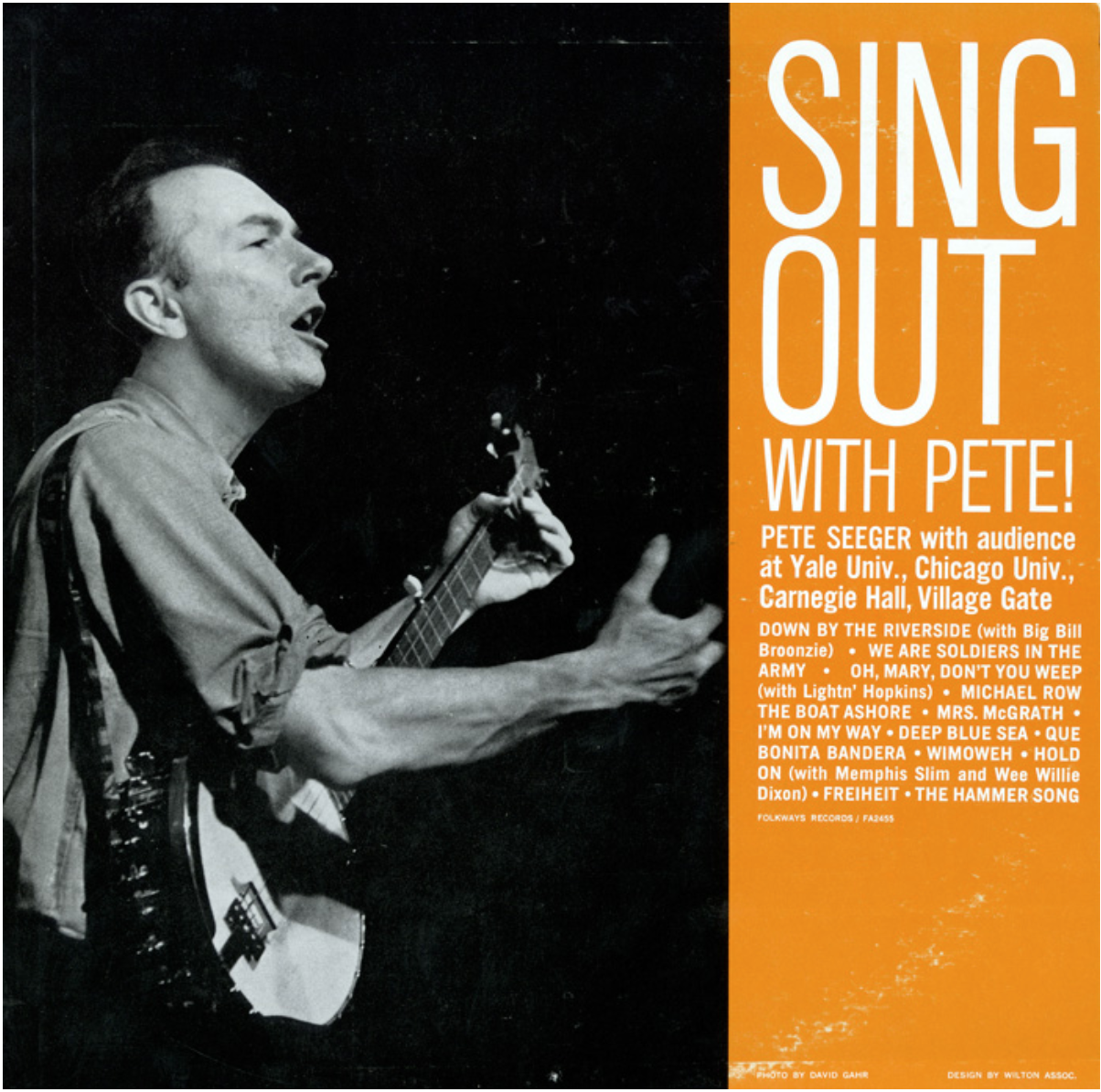
Sing Out with Pete!, cover design by Wilton assoc. Folkways Records.

"Waist Deep in the Big Muddy"

In this listening example, Pete Seeger performs an anti-war song he wrote, entitled "Waist Deep in the Big Muddy."
Musically, what do you notice?
Pete Seeger, by Robert C. Malone. Ralph Rinzler Folklife Archives and Collections, Smithsonian Institution..
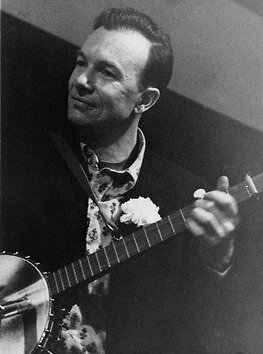

Reflection and Optional Creative Activity
Could you write your own protest song? How would you start?

Based on what you have heard in this component, what are some characteristics of an effective protest song?

Learning Checkpoint
- How has nueva canción been used in the context of fiestas/festivals in Puerto Rico and the Caribbean region?
- Could you write your own protest song? How would you start?

End of Component 3 and Lesson 5: Where will you go next?






Lesson 5 Media Credits

Audio courtesy of
Smithsonian Folkways Recordings
Video courtesy of
Smithsonian Folkways Recordings
El Taller Latino Americano
Images courtesy of
Smithsonian Center for Folklife and Cultural Heritage
Smithsonian Folkways Recordings
Puerto Rico is Music!
© 2021 Smithsonian Institution. Personal, educational, and non-commercial uses allowed; commercial rights reserved. See Smithsonian terms of use for more information.
This project received Federal support from the ... administered by the Smithsonian ....
For full bibliography and media credits, see Lesson 5 landing page.
National Museum of African American History and Culture
Taller Latino
Digital Library of the Caribbean
National Museum of the American Indian
University of Miami Libraries
National Museum of American History
National Portrait Gallery



